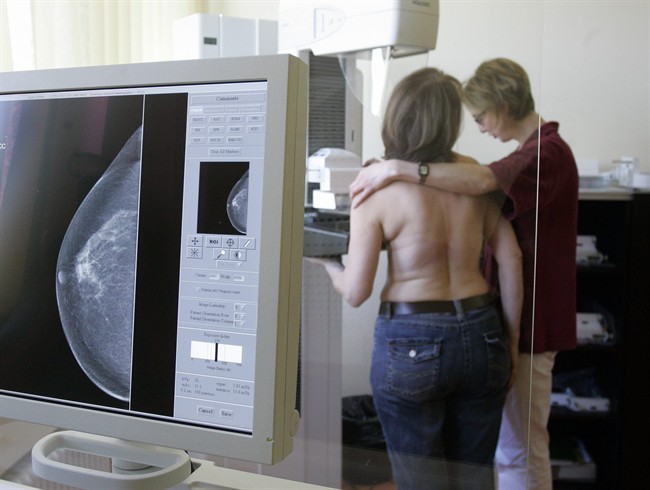New research is warning that South Asian women in Canada are more likely to be diagnosed with later-stage breast cancer compared to the general population.

The findings also point to women of Chinese descent catching the disease earlier on than their counterparts.
The Canadian scientists behind the research, out of the Institute for Clinical Evaluative Sciences and Women’s College Hospital, say that differences in outreach to minority communities may explain why there are disparities between cultures in when breast cancer is diagnosed.
READ MORE: Are moles a warning sign for breast cancer? New research suggests link
“Chinese women in Ontario were the first ethnic minority group identified by cancer agencies as a priority population. The Chinese community is also very proactive in promoting this within their own groups,” Dr. Ophira Ginsburg, a medical oncologist and lead researcher, told Global News.
“But we haven’t seen this advocacy in the South Asian communities,” she said.
Ginsburg is a scientist at the college’s research institute and a University of Toronto professor. She’s spent the past decade zeroing in on differences in breast cancer outcomes and survival rates among marginalized women and even spent time in Bangladesh and Vietnam.
For the study, she teamed with up with ICES’ Dr. Baiju Shah to create an algorithm that would identify Chinese and South Asian communities based on last names.
- Shoppers faces proposed class action over claims company is ‘abusive’ to pharmacists
- ‘Bacterial vampirism’: Deadly pathogens attracted to human blood, study finds
- Most Canadian youth visit dentists, but lack of insurance a barrier
- Landmark smoking ban that would phase out sales passes U.K. parliament
READ MORE: New Canadian guidelines for doctors, young women with breast cancer
Based on more than 41,000 patients diagnosed with breast cancer between 2005 and 2010, the researchers noticed some trends:
- South Asian women were more likely to be diagnosed with breast cancer at Stages Two and Three compared to their peers
- Chinese women were more likely to be diagnosed at Stage One – the least threatening – versus stage two and were even less frequently receiving diagnoses in higher stages compared to the general population
- South Asian women weren’t getting breast cancer screenings in the past three years prior to being diagnosed
Their findings are probably underestimated, too, because the algorithm might have missed certain surnames that overlap with North African and Middle Eastern communities, Ginsburg said.
READ MORE: Breast cancer foundation urging women to get screened for disease
Stage One is a small tumour – less than the size of a centimetre while no lymph nodes are involved. By Stage Two, the tumour is slightly larger at about two centimetres at least, but the disease is treatable with chemotherapy, Ginsburg said.
By Stages Three and Four, the cancer spreads to the lungs, liver and the brain, for example.
In Canada, women with breast cancer have an 80 to 90 per cent chance of living “long-term, disease-free” but in rural Bangladesh, the odds are about 20 per cent, Ginsburg said.
“Research has long suggested minority groups are among the least likely to be screened for breast cancer, impacting their survival rates and outcomes,” Ginsburg said.
READ MORE: 7 findings about Canada’s best and worst cancer-fighting cities
Organizations, such as Cancer Care Ontario, have spearheaded campaigns that target certain pockets of communities. Chinese Canadians were among the first to receive awareness campaigns on breast cancer screening. That could explain why this group of Ontarians is catching their disease earlier than their peers.
In Brampton, Ont., agencies asked women over 50 from Punjabi, Hindi and Urdu groups why they weren’t getting screened. Turns out, access to transportation or feeling uncomfortable going alone to the doctor’s office were primary issues that could be easily resolved.
In one case, a community group hired a bus to take women to screening appointments. Most women without a family history of cancer should start screening at age 50.
READ MORE: Breast cancer and genetics – Angelina Jolie’s double mastectomy
Ginsburg’s full findings were published Monday night in the journal Current Oncology.
carmen.chai@globalnews.ca
Follow @Carmen_Chai





Comments